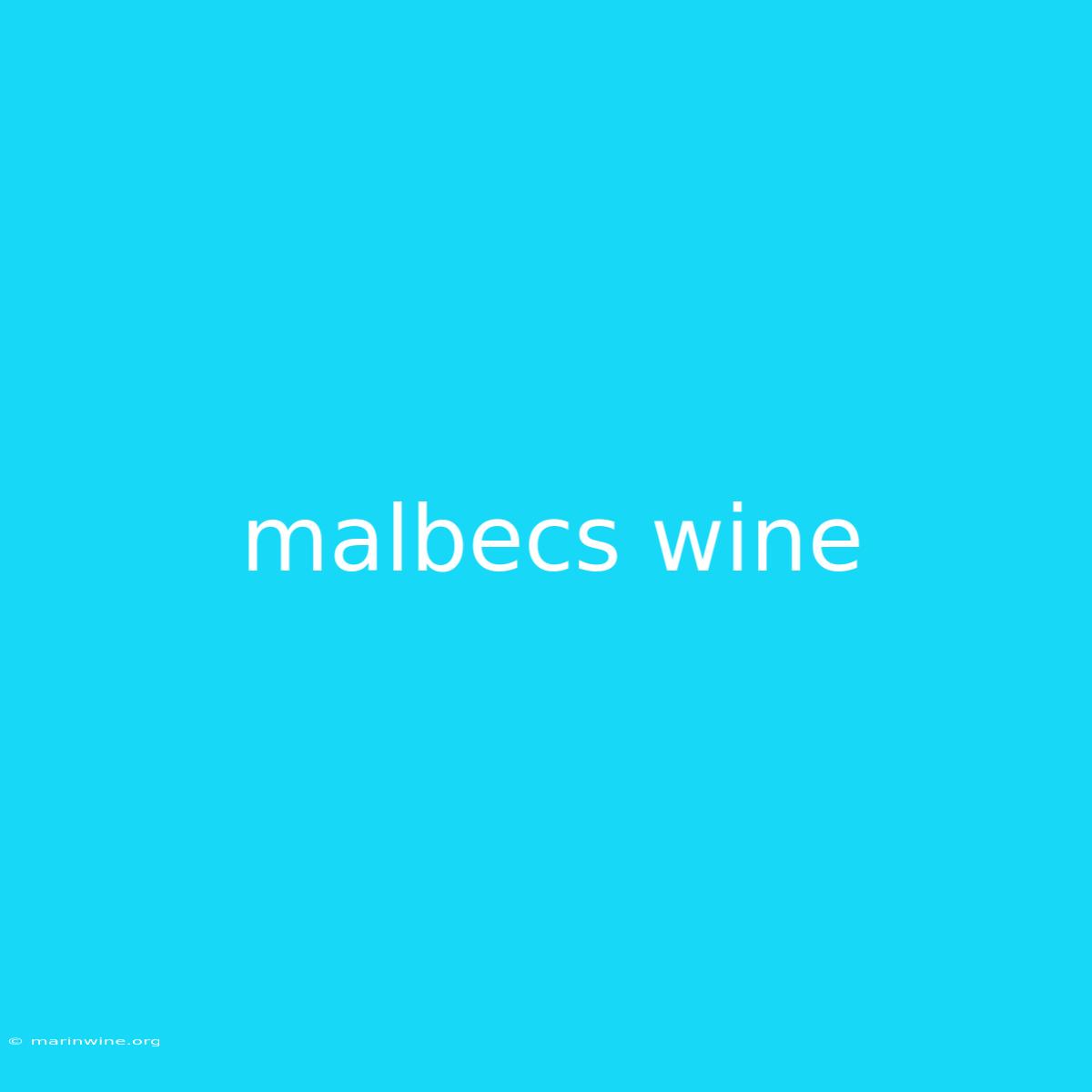Uncorking the Mystery: Discovering the World of Malbec Wines
Have you ever wondered why Malbec is gaining so much popularity in the wine world? It’s more than just a trendy grape; it’s a testament to Argentina’s commitment to quality and a unique expression of terroir.
Why It Matters: Malbec has become a global phenomenon, and for good reason. This review will delve into the history, characteristics, and unique aspects of this full-bodied red wine. We'll explore its origins, delve into its flavor profile, and uncover why it's gaining so much attention.
Key Takeaways of Malbec:
| Feature | Description |
|---|---|
| Origin: | Native to France, but Argentina has made it its own. |
| Taste: | Ripe fruit, dark chocolate, spice notes, and a smooth, velvety texture. |
| Pairing: | Perfect with grilled meats, hearty stews, and rich cheeses. |
| Price: | Affordable to luxury, offering a range of price points for every palate. |
Let's explore the fascinating journey of Malbec, from its French roots to its Argentinian stardom.
Malbec: A Journey of Resilience and Reinvention
Malbec’s story begins in the southwestern region of France, where it played a supporting role in the Bordeaux blends. However, its journey towards stardom began with its arrival in Argentina in the late 19th century. The Argentinian climate, with its high altitude and abundant sunshine, proved to be the perfect environment for Malbec to flourish.
The Mendoza region, nestled at the foot of the Andes Mountains, became the heartland of Malbec production. The combination of volcanic soil, dry climate, and cool nights creates a terroir that lends itself to bold, concentrated wines. Malbec thrived in this environment, and Argentina embraced it wholeheartedly.
Decoding the Flavors of Malbec
A sip of Malbec is an explosion of flavors. The wine’s signature characteristics are:
- Fruit-Forward: Expect a juicy, ripe expression of dark fruits like plum, blackberry, and black cherry.
- Spicy Notes: A hint of black pepper, clove, and cinnamon adds complexity and warmth.
- Chocolate and Tobacco: Notes of dark chocolate and tobacco contribute to its earthy and rich character.
- Smooth Finish: Malbec wines are known for their smooth, velvety texture and lingering tannins.
Understanding the Different Styles of Malbec
Not all Malbecs are created equal. While the basic flavor profile remains consistent, there are various styles of Malbec wines to discover:
- Classic Argentinian Malbec: These wines are known for their full body, ripe fruit, and pronounced tannins.
- Mendoza Malbec: The high altitude and volcanic soil of the Mendoza region produce wines with bolder flavors and a longer finish.
- Reserve Malbec: These wines are made with grapes from the best vineyards and aged longer in oak barrels, leading to greater complexity and depth.
- Organic or Biodynamic Malbec: Sustainable farming practices are becoming increasingly popular, and organic or biodynamic Malbec wines are attracting a growing audience.
Malbec and its Culinary Pairings
The bold flavors of Malbec make it a versatile companion for a wide range of dishes. Consider these pairings:
- Grilled Meats: The richness of Malbec pairs perfectly with grilled steak, lamb chops, and burgers.
- Hearty Stews: The wine’s tannins cut through the richness of stews, while its fruit notes complement the flavors.
- Pasta Dishes: A creamy mushroom pasta or a rich Bolognese sauce can be enhanced by Malbec’s bold character.
- Roasted Vegetables: The spice notes of Malbec complement roasted vegetables, such as eggplant, peppers, and onions.
- Cheese: Consider pairing a medium-bodied Malbec with a strong cheese like cheddar or a blue cheese.
FAQ about Malbec
Q: How do I know if a Malbec is good quality?
A: Look for labels with the “Denominación de Origen Controlada” (DOC) designation, which signifies that the wine meets specific quality standards.
Q: How long can I store a Malbec?
A: Good quality Malbecs can age for 5-10 years, developing more complexity and nuances with time.
Q: What other countries produce Malbec?
A: While Argentina is the leading producer, other countries like France, Chile, and the United States also produce Malbec wines.
Q: Can I find Malbec wines at different price points?
A: Yes, you can find Malbec wines at a variety of price points. From affordable everyday bottles to premium reserve selections, there’s a Malbec for every budget.
Tips for Enjoying Malbec
- Choose the Right Glass: A wide-bowled glass will allow the wine to breathe and reveal its aromas.
- Decanting: For older Malbecs, decanting for 30-60 minutes can help soften the tannins and release the wine's full potential.
- Serving Temperature: Serve Malbec at a temperature of 16-18°C (61-64°F) for the best taste.
- Pair it Wisely: Match the style of Malbec to the food you’re serving.
- Experiment: Don’t be afraid to explore different styles and regions to discover your favorite Malbecs.
Summary of Malbec: A Global Phenomenon
Malbec has come a long way from its French origins. It has found a new home in Argentina, where its bold flavors and smooth texture have captivated the world. Its journey is a testament to the resilience and potential of a grape variety that has found its perfect environment. Whether you’re a seasoned wine connoisseur or just starting to explore the world of red wine, Malbec is a must-try. So, uncork a bottle, savor its complex flavors, and enjoy this remarkable wine.

